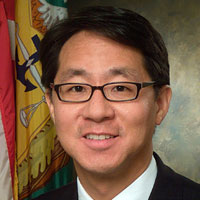SUMMARY
This is AI generated summarization, which may have errors. For context, always refer to the full article.

From what some describe as the world’s first “Chinatown” – Binondo, founded in 1594 – to the skyscrapers of Makati, the ever-changing, now-you-love-it-now-you-don’t Metro Manila may be trumped, so to speak, before we know it.
If all goes on schedule, Trump Tower at Century City will become the third tallest completed building in the Philippines. The skyscraper on Kalayaan Avenue is already architecturally topped out and stands at 822 feet tall.
As the Trump name rises in Manila, former US First Lady Michelle Obama’s quote from the 2016 Democratic Party convention in Philadelphia comes to mind. “When they go low, we go high,” she said.
That memorable turn of phrase, however, reminds me today less of the ugliness of past political campaigns, and more of Southeast Asia’s changing skylines and the struggle to balance and find space for both skyscrapers and street life. Indeed, those same words from the former First Lady have relevance – in a different, economic context in both the United States and the Philippines – as new administrations focuses on making their respective nations “great again.”
US President Donald J. Trump is certainly no stranger to skyscrapers. Trump Tower on Fifth Avenue in New York is arguably one of the most famous addresses in the world. In Chicago – site of the world’s first skyscraper – the Trump International Hotel & Tower, completed in 2009, is the second tallest completed building in that city, and the fourth tallest in the United States.
The United States long ago ceded the title of world’s tallest building to Asia and the Middle East. Seven of the top 10 tallest completed buildings in the world are now in Asia, according to the Council on Tall Buildings and Urban Habitat. This Chicago-headquartered not-for-profit organization founded in 1969 maintains The Skyscraper Center, a database on the world’s tallest buildings.
As of April 2017, the world’s tallest buildings are the Burj Khalifa in Dubai at 2717 feet, the Shanghai Tower in China at 2073 feet and the Makkah Royal Clock Tower in Mecca, Saudi Arabia, at 1972 feet, according to the Skyscraper Center. Coming in at number 4 is 1 World Trade Center in New York at 1776 feet. Hong Kong boasts the eighth tallest building – the International Commerce Center. In Southeast Asia, the tallest buildings are Kuala Lumpur’s Petronas Twin Towers; the Keangnam Hanoi Landmark Tower, in Vietnam; and Bangkok’s recently completed MahaNakhon tower – all at more than 1000 feet tall.
The tallest completed building in the Philippines is the Philippine Bank of Communications on Ayala Avenue in Makati. Also known as PBCOM Tower, that building, at 848 feet, is also the 145th tallest in Asia and the 265th tallest in the world, according to the Skyscraper Center. Only slightly shorter is the Grand Hyatt Metrocenter building in Taguig City.
Cities across Asia are growing outwards and upwards at breakneck speed, with the World Bank forecasting decades of urban growth to come. The region’s ongoing urbanization is likely only to intensify despite almost 200 million people already having moved to Asia’s cities in the first decade of the 21st century.
More than skyscrapers
Liveable cities, however, need more than skyscrapers. The people, the street life, and the neighborhoods at the bottom of the buildings must not be lost in the shadows of new development and pushed ever further out of town, out of sight ,and out of mind. That remains a particularly critical point as city planners across Asia, unintentionally or not, make it much tougher for street vendors, street-side tailors and cobblers, and owners of push carts and food trucks to make a living.

As cities build taller, they must keep 3 key benchmarks for liveability in mind – community, resilience, and sustainability.
First, communities must be put at the heart of urban development. Urban planners must consider not only the impact of a city’s design and new construction on traffic efficiency or parking spaces, but also on inequality and on human lives.
Amid the rush to maximize real estate returns and perhaps build the next great shopping mall, developers must also incorporate public, open spaces to build a sense of community, cultivate street life and encourage social interaction. And that fostering of community should ideally include people from all walks of life and income levels.
Second, cities must build in resilience.
A society or city that is socially inclusive and with strong community bonds leads to a city that is also resilient. An initiative of the Rockefeller Foundation, 100 Resilient Cities, defines urban resilience as the capacity to survive, adapt and grow no matter the stresses or shocks they experience.
Beyond skyscrapers, cities must build in comprehensive security and rule of law, effective public health systems, inclusive housing and labor policies, and diverse transport networks, as well as effective delivery of emergency services. Here, the private sector, including insurance and reinsurance companies, will play a necessary role along with government policies to encourage an enabling environment for resilience.
And third, cities need to grow in an environmentally sustainable manner.
With more and more people moving into cities, tackling environmental challenges is already increasingly an urban issue. Incorporating innovations and technologies in areas such as infrastructure, energy and transport will be essential to building smarter if not “smart cities.” Here again, the contributions and coming together of public, private, and not-for-profit sectors will be important.
There are many ways to measure a city’s success. At the Milken Institute, where I serve as that non-partisan economic think tank’s inaugural Asia Fellow, our researchers since 1999 have used a comprehensive, fact-based set of criteria to rank 200 large and 201 small metros across the United States as part of an annual Best-Performing Cities index.
The economic outcomes-based index heavily weighs growth in employment, wages and technology. More subjective metrics such as quality-of-life and cost-of-living are not included.
Tech as driver
This past year, tech still drove the top rankings as cities that exceled in innovation again topped the index, with San Jose, California, in Silicon Valley, claiming the No 1 spot for the second year in a row. A similar Milken Institute Best Performing Cities China list based on official Chinese economic, jobs, wage growth, foreign direct investment and other data singled out Shanghai, Guiyang, and Zhoushan as top performers.
Certainly, not all cities are blessed with the resources that Silicon Valley’s urban areas or Shanghai have as they too face the growing physical, social and economic challenges that are a part of an increasingly urbanized 21st century. Disparate economies and approaches to development in the cities and municipalities that make up Metro Manila have resulted in vastly different urban experiences.
But today, amid the diversity of the world’s changing urban landscapes, on one point there should be agreement.
Liveable, dynamic, and vibrant cities are greater testament to a country’s prosperity and policy successes than any number of skyscrapers, no matter how big or how tall. Both of my former hometowns – New York and Manila – may soon now have Trump Towers.
Yet, as the United States rebuilds and cities in America and across Asia, including Metro Manila, build higher, it is the communities that are sustained below that will matter most. – Rappler.com
Curtis S. Chin, a former US ambassador to the Asian Development Bank, is managing director of advisory firm RiverPeak Group, LLC. Follow him on Twitter at @CurtisSChin.
Add a comment
How does this make you feel?
There are no comments yet. Add your comment to start the conversation.